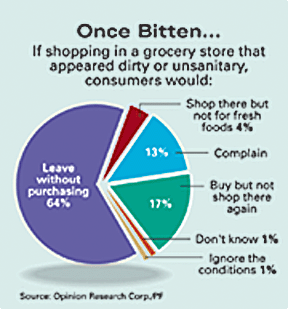
According to Pam Chumley, executive director of the Association for Dressings & Sauces, “Dipping is a fun way to reach the daily requirement of vegetables or can be a quick and easy way to snack. For whatever motivation, dipping is a hot trend that we are seeing more and more.”
Dipping behaviors do vary, however, depending on age and gender, the survey revealed. Men are more frequent dippers than women but are less likely to prepare a homemade dip or a dip from a dry mix. Spinach and vegetable dips are the choice for most women, while men opt for creamy ranch and salsa. Men were also less likely to dip using healthy foods such as raw vegetables and fruit slices.
Younger people and families appear to dip more, as well, presumably in efforts to make vegetables appealing to children, which was a goal of 22% of respondents. For their part, kids enjoyed dips' flavors and the interactive, play-with-your-food nature of dipping.
Smooth dips were preferred over chunky, while chips (both potato and tortilla) were most frequently used for dipping, though fresh cut or baby raw vegetables, chicken tenders/wings and crackers/breadsticks also placed in the top five. Most of those polled, however, said the dip was more important than what was being dipped into it.
For more information, contact Jana Boyle, 404-252-3663

A Clean Sweep
A recent study has found consumers are likely not to shop at a grocery store that has a dirty appearance. The national poll reported 81% of consumers said their purchasing decisions are influenced by the cleanliness of a store. Opinion Research Corporation International conducted the survey on behalf of Kimberly-Clark Professional.If the grocery store appeared dirty or unsanitary, 64% of respondents said they would leave immediately without purchasing anything, while 17% said they would purchase items during that visit but would not return to shop there again. Only 1% said they would ignore the conditions and continue to frequent the store, while 13% said they would complain about the dirty conditions to a store employee. Many attribute the results to a growing awareness of food safety issues.
“The general public has become more concerned with issues relating to food safety over the past few years,” says Amy Walker Barrs, grocery segment manager for Kimberly-Clark Professional. “People often make an intuitive connection between the cleanliness of a grocery store and the cleanliness or safety of the food found in that store.”
Food safety also surfaced in another of the questions asked of survey respondents. When queried about what feature they would most like to see in the grocery store of the future, 42% said services related to food safety. Some 30% wanted an automated device to check the safety and purity of food products, while 12% would like up-to-the-minute food safety and product recall information. For more information, contact Linda Duncan, 678-352-6208.